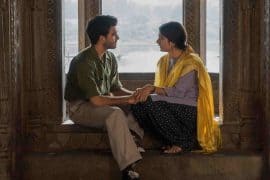India’s classical art traditions of dance and music are widely popular not just for their soulful renditions but also because of the strong influence they’ve had in the development of Indian aesthetic traditions. Like a lot of disciplines in India, Indian classical arts also trace a divine origin and the history of their origins often sees an interesting blur between the line dividing mythological time and cosmological time. For instance, the Mahabharata was written at a time when the humans had started recording time, but according to faith, actually happened in mythological time, which doesn’t have a scientific proof but a proof validated by faith and religion. Similarly, to give another example, Indian music is said to have originated with Brahma naad or the sound of OM that was chanted by Lord Brahma, thus again blurring real time and mythological time, since you can’t place the existence of Brahma in the man-made calendar; according to religion it is even before humanity as it exists today came upon earth.
Further, the beginning of the training is always with invocations in the form of vandal or bhajan dedicated to particular Hindu gods and goddesses. Even the beginnings of most recitals are with devotional invocations. Students are taught to worship Goddess Saraswati, the goddess of music and dance. The proscenium theatre is seen not as an entertainment ground but as a temple where you’re supposed to pay your respect to the gods.
As a Kathak dancer myself, I’ve always felt uncomfortable with this super imposed characterisation. As an artist, it is important to keep the freedom of expression in mind and allow the scope for the artist’s own aesthetic theories to develop.





Comments are closed.